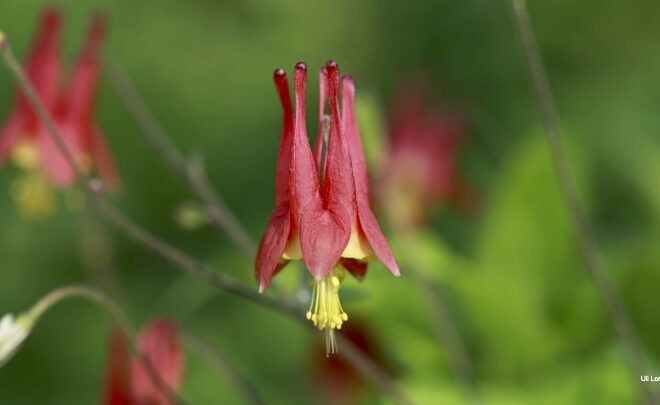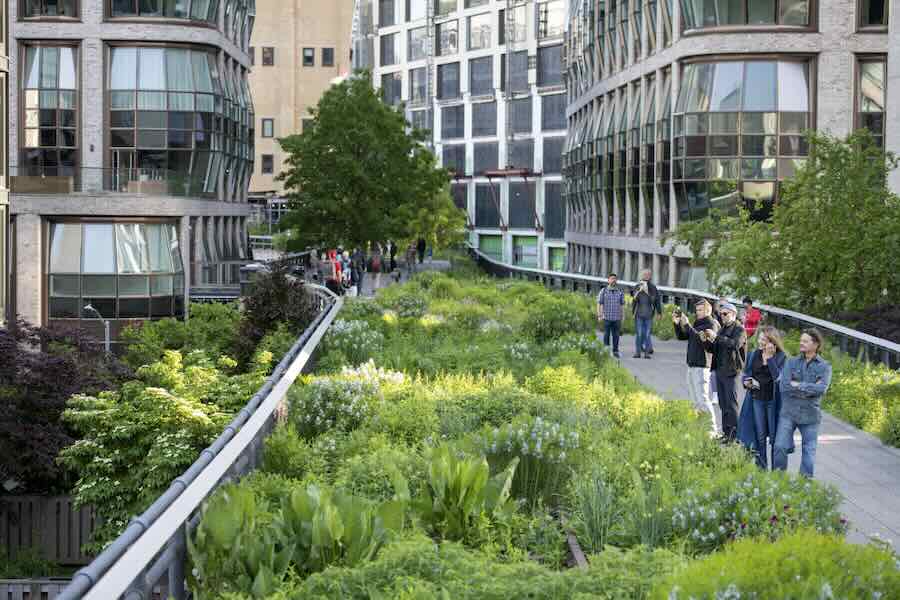
the extreme line’s naturalistic gardening courses, with richard hayden
[ad_1]
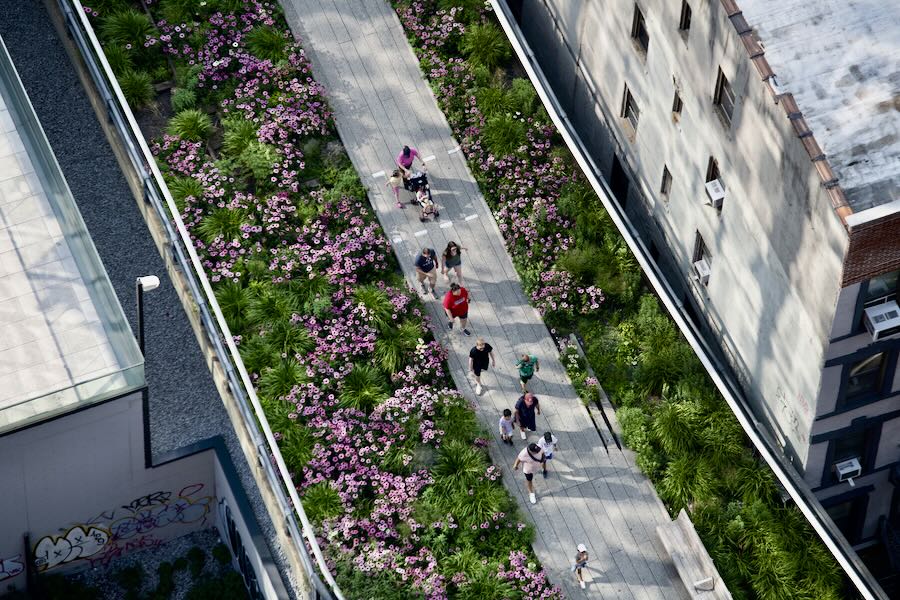 IT’S ONE of the best-known naturalistic gardens wherever, and but it surely’s perched in in all probability essentially the most unnatural spot attainable, 30 toes extreme above New York Metropolis web site guests on an abandoned elevated railway line. The Extreme Line on Manhattan’s West Aspect is celebrating the fifteenth anniversary of the opening of its first half, years which have been stuffed with educated courses on gardening on this looser, nature-inspired kind.
IT’S ONE of the best-known naturalistic gardens wherever, and but it surely’s perched in in all probability essentially the most unnatural spot attainable, 30 toes extreme above New York Metropolis web site guests on an abandoned elevated railway line. The Extreme Line on Manhattan’s West Aspect is celebrating the fifteenth anniversary of the opening of its first half, years which have been stuffed with educated courses on gardening on this looser, nature-inspired kind.
Within the current day’s customer is Richard Hayden, the Extreme Line’s senior director of horticulture. His group of 10 horticulturists manages the naturalistic gardens, initially designed by Piet Oudolf of the Netherlands, spanning elements of the 1.5-mile beloved park that welcomes about 7 million friends a 12 months. (Above, overhead image by Timothy Schenck.)
Be taught alongside as you’re taking heed to the July 8, 2024 model of my public-radio current and podcast using the participant beneath. You might subscribe to all future editions on Apple Podcasts (iTunes) or Spotify (and browse my archive of podcasts proper right here).


courses in naturalistic gardening, with richard hayden
Margaret Roach: So happy anniversary, birthday—regardless of we have to identify it, to you and the group.
Richard Hayden: Thanks.
Margaret: It was gratifying meeting a couple of of you, at least nearly, to do a present “New York Events” yard column collectively, which obtained an superior response, which made me happy. So briefly, I consider for individuals who discover themselves listening from far and large who won’t have visited, inform us the lay of the non-land over there [laughter]. I indicate, it is a nutty setup whenever you consider it.
Richard: While you consider it altogether, the reality that it occurred the least bit is often a miracle. So the truth is, it was an unused, elevated railway on the West Aspect of Manhattan. And over the course of the 20 years that the trains weren’t working, seeds had drifted in and birds had probably dropped a few points off and soil had gotten created, and so this panorama had occurred.
And when the time obtained right here to consider what to do with it throughout the late ’90s, the idea that it might develop right into a yard on account of people have been up proper right here looking at it in its wild state, and there have been some excellent photos taken by Joel Sternfeld of its wild state that it grew to develop into this idea that it might very effectively be a yard. And Piet Oudolf was employed and Space Operations and Diller Scofidio + Renfro did some good designs.
And proper right here we’re 15 years later, and it is, I consider one of many essential essential public gardens of the twenty first century, on account of it modified the easiest way we consider how we yard. It’s the 4 season yard. As Piet says, “a plant isn’t value rising besides it appears to be good lifeless.” [Laughter.] And it’s true. It’s so beautiful proper right here throughout the fall and throughout the winter, but it surely certainly’s three-dimensional yard chess that he performs on account of each zone is barely completely totally different.
And it provides you this emotionally evocative journey as you go from woodlands to grasslands and completely totally different mixtures and complexities. And naturally, all that complexity leads to biodiversity. Now now we have many bees and birds and totally different animals that go to. So it’s solely a really implausible respite from the city.
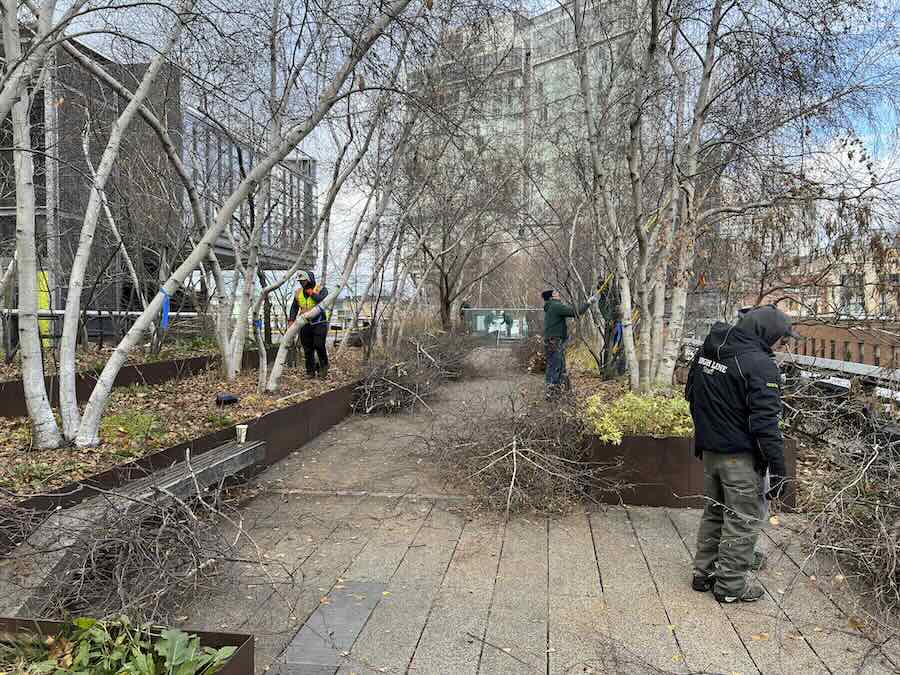
 Margaret: And the issue that when we did the Events story that I merely found in the event you first talked about it to me and I merely can’t get better from the considered it, you possibly can have your soil depth up there and these beds which were constructed for this on this elevated railway, the soil is not what, higher than 18 inches deep? I indicate, it’s like raised beds [above, during pruning season; photo by Richard Hayden] on a raised railroad platform.
Margaret: And the issue that when we did the Events story that I merely found in the event you first talked about it to me and I merely can’t get better from the considered it, you possibly can have your soil depth up there and these beds which were constructed for this on this elevated railway, the soil is not what, higher than 18 inches deep? I indicate, it’s like raised beds [above, during pruning season; photo by Richard Hayden] on a raised railroad platform.
Richard: You’re correct. It’s primarily 18 inches. There’s a pair spots the place we’ve obtained some raised planters that we mound up and probably get to 30 inches or so. And I’ve to tell you, as soon as I first started, which was about just a bit over two and a half years prior to now, and I was seeing these 30-foot-tall birch bushes and oak bushes and all these huge bushes rising in 18 inches of soil, it really saved me up at evening time. Every time the wind would blow…
Margaret: I would have a panic assault on the thought of it. Exactly.
Richard: After which I did some mountaineering in Northwest Connecticut on the Appalachian Path, and there had been a windstorm, and these mature bushes had blown over. And lo and behold, 18 inches of roots because of the whole glacial rock. The forest was really rising in 18 inches of soil. And I assumed, you notice what? Mother Nature’s figured this out. I don’t have to stress lots.
Margaret: O.Okay., so you purchased started sleeping, good [laughter].
Richard: Positive, exactly.
Margaret: Nevertheless it is. It’s really pretty a feat and it’s good that it was impressed by that self-sown madness that had occurred on this abandoned home.
Richard: Exactly, exactly, clearly with an ingenious eye. And the difficulty with 18 inches is that it doesn’t… Because of there could also be warmth air on prime and warmth air beneath, and chilly air on prime and chilly air beneath, so we don’t have a great deal of cushion.
Margaret: No.
Richard: So all through heat waves, for instance, we now should be very cautious to take care of points with the right moisture ranges. After which throughout the winter sometimes, we do lose a few points if we now have a moist chilly snap or one factor. So it does make challenges for that strategy.
Margaret: So Piet designed it in a naturalistic kind, and he’s kind of the chief of that movement. Nevertheless it doesn’t indicate that it’s all native. And it moreover doesn’t indicate, naturalistic doesn’t indicate, like hands-off, let it do its issue; regardless of happens, happens. It is a design. So let’s communicate just a bit bit about that.
Richard: Correct. So it is about 50 p.c native. We did an beautiful hort celebration ultimate 12 months the place we honored New York Metropolis native crops, and we found we had 160 species which were native or recognized to be native to New York Metropolis out of the 5 hundred or so species that we now have. And they also weren’t chosen on account of they’ve been native, they’ve been chosen on account of they’re merely really good, resilient crops. So I was happy to do this discovery.
And Piet may very well be very lots about gardens are for people, and so natives are good, nonetheless sometimes there are bloom intervals the place the natives really aren’t filling the realm of curiosity or probably they don’t have ample winter development. He’s happy to combine points as long as they’re well-behaved, and we now have a few that have not been so well-behaved. So it’s a finding out curve.
Margaret: [Laughter.] Don’t all of us, Richard? Don’t all of us have a few of those?
Richard: Successfully, to be a worthwhile plant on the Extreme Line, it is necessary to have a sure amount of resilience, a sure amount of aggression. And so a great deal of what we do is deal with these. Now now we have a grass, Korean feather grass that was planted in a single house, and I seen in some photos, in about three years after it was planted, it had been 20 p.c of the combo. And three years later, it was 80 p.c of the combo on account of it’s merely such a virulent reseeder. That’s considered one of many points we now should do, is we now should deal with these points that have to be too worthwhile, so that they don’t swallow their neighbors. Maintain the stability.

 Margaret: Successfully, and so a couple of of the ways in which he urged throughout the preliminary design and that you just and your group uphold and so forth to be naturalistic… I indicate, for instance, there was one that really you guys talked to me about via the Events story interview, which, the truth is, it didn’t really occur to me. I wouldn’t have seen it consciously, nonetheless there it is and it’s so obvious now that you’ve got talked about it aloud to me.
Margaret: Successfully, and so a couple of of the ways in which he urged throughout the preliminary design and that you just and your group uphold and so forth to be naturalistic… I indicate, for instance, there was one that really you guys talked to me about via the Events story interview, which, the truth is, it didn’t really occur to me. I wouldn’t have seen it consciously, nonetheless there it is and it’s so obvious now that you’ve got talked about it aloud to me.
When you possibly can have the yard on both aspect of a path, that these drifts of crops which may be on the one side moreover should sometimes be on the other side so that it appears to be as if the path was added by a pure house versus… Yeah, this continuity versus these are two separate gardens and proper right here is my path, additional manmade. And easily a variety of these hints like that. Any others like that that you simply consider? Successfully, let’s communicate regarding the drifts probably on account of that’s an essential aspect of his types of designs and naturalistic kind. [Above, Timothy Schenck photo.]
Richard: Successfully, it’s attention-grabbing on account of it is going to be very easy to get these large superior gardens with various crops displaying all subsequent to 1 one other. Nevertheless in the event you’re using nature as a model, nature tends to not… I indicate, it might be a very thick planting, nonetheless often it’s a repetition of a sequence of species. So that’s what Piet has replicated. He’ll choose what he calls his fundamental accent crops. After which the Extreme Line yard is unquestionably what he would take into consideration a matrix yard. So it’s a planting of a groundcover layer, often flowering.
So that you probably can have points like autumn moor grass or catmint and totally different points that may merely offer you a basis a flooring cowl, and that’s the type of issue that you just’ll see often drifting on both aspect of the path. After which into which may be the larger perennials that occur in threes and fives and sevens. Always odd numbers for some trigger, but it surely certainly does always appears to be larger. Nevertheless he retains it simple. By sustaining the drifts huge, it turns into just a bit bit additional legible.
After which many of the new gardens that he does are actually block planting the place it’s merely sequence of blocks, clearly not at all a geometrical kind, additional of a tear kind or some type of a additional pure kind. Nevertheless he does that pretty repeatedly collectively along with his newer gardens, on account of it’s easier to take care of. You acknowledge what’s presupposed to be the place, what’s gotten out of steadiness.
Margaret: I see.
Richard: Nevertheless proper right here on the Extreme Line, we’re just a bit bit additional superior, so we’re constantly managing the dynamics of anybody species. Some points they don’t succeed. We had a couple of crops. I’m very lots into Helenium, and I’m forgetting frequent names.
Margaret: Sneezeweed [laughter].
Richard: Sneezeweed, correct, positive, and they also merely not at all took. And naturally, Piet doesn’t use a great deal of crimson, and it’s kind of burgundy crimson, the one which he was suggesting proper right here. I consider it was ‘Moerheim Magnificence.’ We merely wanted to seek for totally different points on account of it merely was not at all happy.

 Margaret: In his distinctive planting designs for the various yard areas on the Extreme Line, he kind of narrows down… I indicate, these are smaller areas than nature, nonetheless he narrows down the number of key crops that we’ll be in, and he makes use of huge numbers of each one in these drifts and these naturalistically shaped drifts. Because you don’t want it to solely be a zillion polka dots far and large of chaos. I indicate, that’s not going to study, is it? [Above, Liz Ligon photo.]
Margaret: In his distinctive planting designs for the various yard areas on the Extreme Line, he kind of narrows down… I indicate, these are smaller areas than nature, nonetheless he narrows down the number of key crops that we’ll be in, and he makes use of huge numbers of each one in these drifts and these naturalistically shaped drifts. Because you don’t want it to solely be a zillion polka dots far and large of chaos. I indicate, that’s not going to study, is it? [Above, Liz Ligon photo.]
Richard: No. And it’s merely attention-grabbing we’re having this dialog, and I was merely this morning laying out a Piet Oudolf design. Now now we have a model new plaza that’s getting into into at street stage at 18th Highway that’ll be the newest a part of the Extreme Line to open in September. And it’s the first time I’ve laid out a Piet design. And now we have been making an attempt on the plans, and it actually is, on this specific plan, huge drifts of varied kinds of grasses.
After which there’s geraniums coming in proper right here and geums over proper right here and agastaches over proper right here. You get a higher sense of really what he’s doing. That’s the major time I’ve ever executed it, but it surely certainly’s really thrilling to place the yard out and in addition you get a approach of really how his ideas kind of works. You see the development behind what he’s attempting to do.
Margaret: I suppose it was ultimate 12 months probably he had a information come out that’s about his career, his duties, and there have been a great deal of his designs in it as part of the art work throughout the information, not merely photos. And you may see that there, too. You may even see these shapes and the crops which may be specified to go in every and so forth.
The other issue I uncover attention-grabbing regarding the drifts is it pleases our eye, and it actually works on this sort to do it that strategy. Nevertheless in nature, must you had merely onesies of 1,000,000 varied issues, the animals, significantly the bugs who’re relying on these crops, couldn’t uncover them and couldn’t benefit from them within the similar strategy. So the drifts moreover serve a perform, are you conscious what I indicate, in nature, throughout the pure world.
Richard: Utterly.
Margaret: These plant communities are often not merely 1,000,000 completely differing types of crops all crunched collectively. There are a few key crops in greater numbers.
Richard: And in extra of the grassland plantings, for instance, he’s relying on positive crops to have the development to hold totally different crops up, which is what, the truth is, happens of their pure environments as correctly.
Margaret: Yeah, the meadows and prairies are literally grasslands.
So I’m suggested by heaps of people that’ve tried to or who’ve gone additional naturalistic in some house of their gardens, probably made a small meadow or regardless of, I hear, “Successfully, but it surely certainly retains altering. It doesn’t appear to be the distinctive plan. It’s not how I imagined it.” [Laughter.] “It doesn’t appear to be the picture throughout the information,” after they bought it from a catalog, they bought the seed or the plugs or regardless of.
That’s type of that, oops, howdy succession, pure succession: the easiest way points go in nature. And so let’s communicate just a bit bit about that, on account of that’s one factor that the Extreme Line 15 years on, or any naturalistic yard even 5 years on doesn’t look exactly similar to the plan, even when it was a Piet plan [laughter].
Richard: Applicable. And Piet always says a yard’s not at all executed. And it is an evolution. And the yard will inform you what it wishes to become. And so as soon as we’re the stewards of these naturalistic landscapes, we’re interrupting the succession, the succession being the pure world is shifting from a grassland to a mature forest. And that’s often the course of the evolution of planting. And so we get to step in and say we have to protect it as a grassland, and so now we have to make these interventions.
Now we have to make substitutions for the crops that aren’t working. Now we have to edit out these, the thugs, in the event you’ll, that get too happy. We get to be completely shocked by the serendipity of 1 factor seeding in, or the combination that you just really weren’t positive of, but it surely certainly’s kind of rearranged itself in the easiest way that a couple of of the problems have seeded. It’s being awake to how the yard wishes to mature, and hopefully having a significantly mild contact on guaranteeing that you just get one factor that’s pleasing and in addition you’re making the right mixtures obtain success.
Margaret: Nevertheless it is a great deal of modifying. I indicate, it’s not merely stepping once more and going, “O.Okay., that’s executed. It’s been planted. All accomplished. On to the next enterprise.” It’s not that the least bit.
Richard: No. And some points really are speculated to be fillers in an early planting. After which as quickly because the grasses get established, they could have to become 80 p.c of your meadow. And so it is necessary to probably have strategies for eradicating a few, a couple of of the taller grasses, the massive… Is it massive bluestem?
Margaret: Little bluestem and… I don’t know what you identify the large one, nonetheless yeah.
Richard: Enormous bluestem. Which left to its private items was at one degree crowding out the pathway. And so we now should go in and say, you notice what? You’re good. We would such as you throughout the once more. We would such as you just a bit bit additional as a punctuation fairly than as a secure wall. And so that’s the place a great deal of the modifying is offered in.
Margaret: Since you could have been merely saying the completely totally different crops and the best way they nearly have a life cycle, positive crops in these designs, and some are nearly used as nurse crops, what you may identify nurse crops, to start out with to fill home with one factor other than weeds which will come up from the soil. So a couple of of your biennials and so forth, they’re not going to ultimate 5 or 10 years [laughter]. They’re not going to be there on account of as you degree out, the grasses and totally different points could have crammed in.
These points which may be relying on self-sowing aren’t going to have as many options to realize bare soil anymore and their life cycle may be over from these distinctive crops. So your black-eyed Susans or regardless of that you just who’ve been like, “Oh, look, there’s so a number of these. They offer the impression of being so pretty,” Successfully, that won’t happen in 12 months 3 or 4 or 5 or 10.
Richard: Correct. This morning I was inserting Oriental poppy, which we don’t have on the Extreme Line. It was considered one of many distinctive crops which were spec’d, but it surely certainly’s a sort of early attention-grabbing flower crops to come back again up between the small grasses for the first two or three years. They’re not terribly long-lived in my experience, anyway, so it’s merely a sort of let’s create some curiosity.
We had the similar with… Is it foxtail Lily? Eremurus, positive. The similar issue. Truly worthwhile, an beautiful Extreme Line plant throughout the first 5 years, nonetheless now it’s been crowded out by grasses. We tried to get it established as soon as extra, and it’s a troublesome one. It’s a sort of so used to having educated drainage and scorching, dry areas. You make sacrifices. You say, correctly, that was good to start out with and now we’ll switch on to let the yard have one other aspect that’s going to shine.
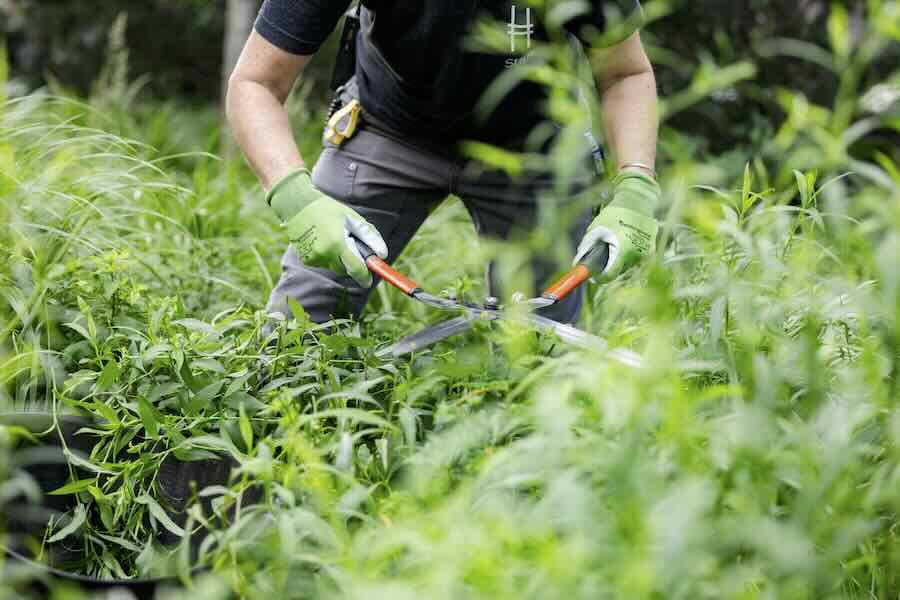
 Margaret: Correct. So one different kind of modifying, a number of individuals have heard of the Chelsea chop, the timed and named for the Chelsea Flower Current in England, on account of in late Might, positive kinds of perennials are within the discount of half strategy. And doing that, they’re bushier and probably they start blooming just a bit later, nonetheless they’re fuller and so forth.
Margaret: Correct. So one different kind of modifying, a number of individuals have heard of the Chelsea chop, the timed and named for the Chelsea Flower Current in England, on account of in late Might, positive kinds of perennials are within the discount of half strategy. And doing that, they’re bushier and probably they start blooming just a bit later, nonetheless they’re fuller and so forth.
You kind of take it to an extreme up there [laughter]. You guys have gotten Chelsea chops occurring. Merely inform me just a bit bit about that strategy of modifying the pictures. [Above and below, hedge clippers are used on drifts deeper in the borders; pruning shears on plants closer to the paths. Liz Ligon photos.]
Richard: Successfully, I consider it primarily comes from the aspect like we now have so many crops, and the gardens are so full; we don’t have the flexibleness to stake one thing. Asters throughout the tall grass prairie like Chelsea Grasslands [part of the High Line] will do O.Okay. with just one chop the place we’ll hit them nearly in late Might, early June, correct throughout the Chelsea Flower Current. Nevertheless we now have I consider it’s Aster October Skies which may be peppered all via the Gansevoort Woodlands of the Birch Woodlands down proper right here on the south end of the park.
Because of they’re in extra shade and to allow them to get floppy, I consider John [Gunderson] cuts these two or thrice. So now I consider they did them in late Might, as soon as extra in June, after which he’ll do one different decrease probably in mid-July. And they also’ll bloom later, nonetheless they’ll even be beautiful, bushy, merely probably 12 to 18 inches tall fairly than the 30 or 36 inches that they could flop over within the occasion that they’ve been left to their very personal items. We do that fairly lots with crops. I consider Nepeta, some Monarda have been executed typically.
Margaret: I suppose goldenrods too.
Richard: Solidago, and some of the Coreopsis, too, I consider, we hit.
Margaret: As soon as extra, it provides you, with out staking or one thing like that, which could merely be unattainable, it provides you a bushier plant, which is sweet and needed. In some other case you probably can have a great deal of floppy points, significantly as you degree out throughout the shady areas. You have a great deal of that occurring. And I take into consideration that you just do some thinning moreover, on account of you possibly can have a great deal of wind, don’t you?
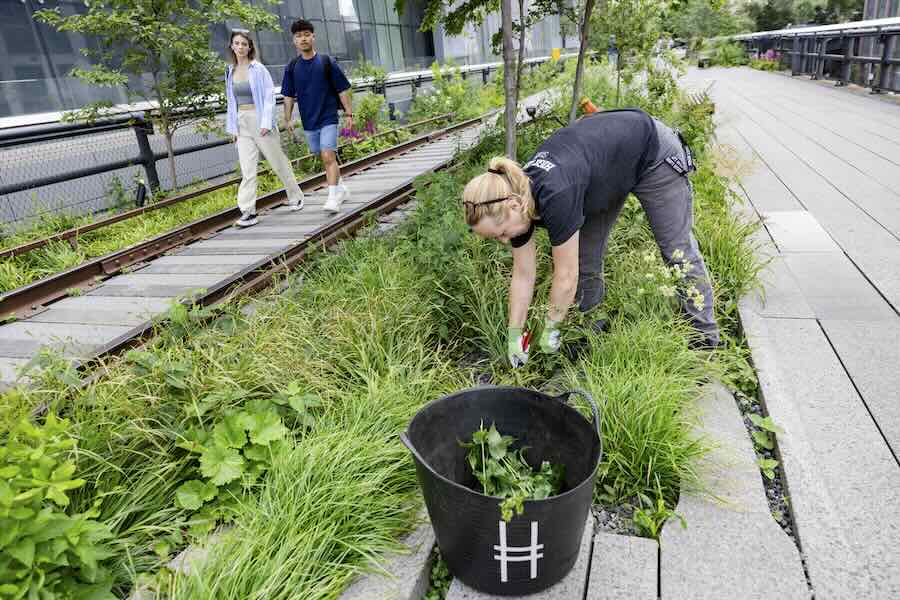
 Richard: My gosh, positive. Truly, it was pretty windy this morning, and fantastic wind on account of it was low-humidity wind for a change. Nevertheless I do know that on a couple of of the Joe-Pye weeds, for instance, which can get fairly dense and tall, these could also be very affected. We do it moreover with Baptisia, the false indigos.
Richard: My gosh, positive. Truly, it was pretty windy this morning, and fantastic wind on account of it was low-humidity wind for a change. Nevertheless I do know that on a couple of of the Joe-Pye weeds, for instance, which can get fairly dense and tall, these could also be very affected. We do it moreover with Baptisia, the false indigos.
Margaret: Constructive.
Richard: So there are a couple of of the larger flowering perennials that really have to be throughout the windier spots do have to be thinned out so that they don’t create an extreme quantity of sail.
And naturally, we do that with all of our bushes as correctly. We protect your complete birch bushes and the oaks and each half pretty correctly laced out to make sure that we’re getting a great deal of good dappled mild on the understory, on account of we’re recognized for having this superior tree cowl, flowering spring bushes, probably the Amelanchier or the redbuds, after which the groundcover layer.
And all of that coexists, and that’s what I consider makes the Extreme Line such an superior place to go to on account of the gardens are so intense, and you have got all these completely totally different layers. Nevertheless it merely takes a great deal of administration to make sure each half stays happy.
Margaret: Correct, correct. Yeah, it’s fairly lots. [Laughter.] It’s undoubtedly, undoubtedly fairly lots. Nevertheless you could have been merely talking about pruning primarily the bushes. And the reality that what all of us confront, speaking of points that change in a yard, no matter whether or not or not we’re managing it naturalistically or not, is often a lot much less mild, on account of our bushes and shrubs develop as we’re there for longer. And so sometimes there’s the exhausting willpower to even take away a woody plant, on account of it’s surviving on the expense of, as you’re stating, similar to the groundcover layer or regardless of.
There’s merely not the sunshine that there was, and each half else is struggling. That’s a extraordinarily troublesome one. Nevertheless as soon as extra, it would not matter what your kind or your design aesthetic, that’s one which gardeners face who hold put for a really very long time and making shrubs develop, correct?
Richard: Positive. And it’s not a light-weight willpower that we make to skinny bushes out. Nevertheless I consider people have been shocked how correctly bushes actually did on the Extreme Line. I don’t suppose they anticipated them to get pretty so tall and pretty so full. So it’s easier to say it’s merely getting too crowded on this home. The only issue to do, fairly than try to control every single tree into being merely the right amount of open, we’re capable of selectively take out a tree proper right here or there and open points up. And it appears to be additional pure, frankly.
You might consider getting that subsequent succession, these youthful bushes rising in your woodland, so it feels just a bit bit additional pure, and then you definately undoubtedly’re planning for succession. Because of if all the bushes are 20 years earlier, all the bushes are in all probability going to fail on the similar time. So now we’re fascinated about getting some smaller bushes on this fall. So we now have this completely totally different age stage.
And in areas similar to the Flyover, which is the realm people is also acquainted with with the elevated walkway, there we’re frankly getting pretty a bit little bit of reseeding. Successfully, the sassafras come up in every single place, nonetheless the magnolias, the big-leaf magnolias are self-seeding. Quite a few the sweetbay magnolias are moreover self-seeding. So we’re leaving these and we get to select out. And even in our bur oak grove, we now have some seedlings that we’re going to depart, so we’ll have completely totally different ages. And so it merely is creating that, fascinated about what’s going to obtain success in 5 or 10 years. It’s merely planning ahead.
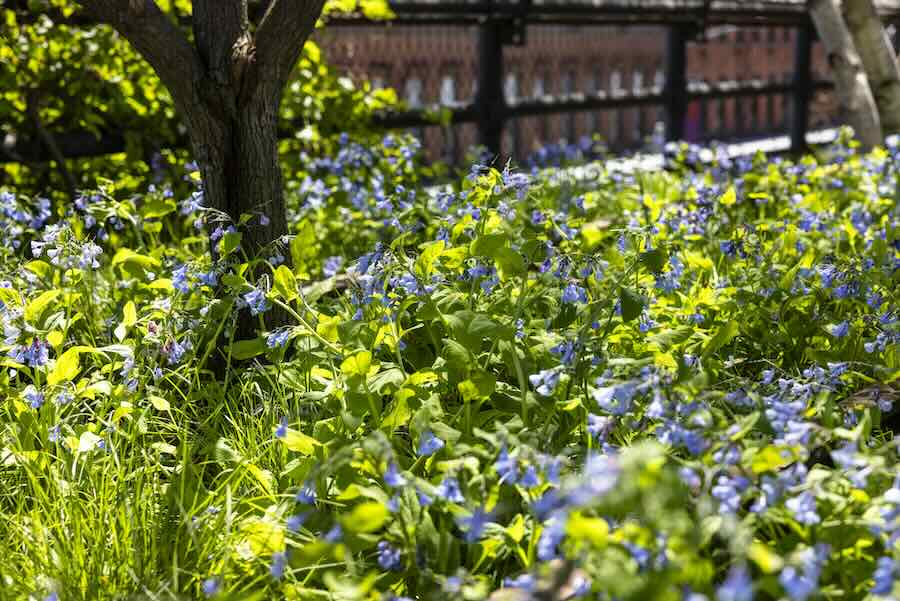
 Margaret: I merely wanted to ask an adjunct to considered one of many points now we have been talking about sooner than with self-sowns. Even ones which may be spec’d throughout the plan and the design, even ones that you just love. I consider John, who you referred to sooner than, John Gunderson, one amongst your senior gardeners, he has a great deal of Virginia bluebells, Mertensia virginica, in his house [above; photo by Andrew Frasz]. And there could also be an extreme quantity of of a wonderful issue, correct? It would self-sow an extreme quantity of and deform the look. So sometimes you’re taking out points which may be fascinating nonetheless not in additional. Is that one different mandate?
Margaret: I merely wanted to ask an adjunct to considered one of many points now we have been talking about sooner than with self-sowns. Even ones which may be spec’d throughout the plan and the design, even ones that you just love. I consider John, who you referred to sooner than, John Gunderson, one amongst your senior gardeners, he has a great deal of Virginia bluebells, Mertensia virginica, in his house [above; photo by Andrew Frasz]. And there could also be an extreme quantity of of a wonderful issue, correct? It would self-sow an extreme quantity of and deform the look. So sometimes you’re taking out points which may be fascinating nonetheless not in additional. Is that one different mandate?
Richard: Positive, exactly. The Mertensia is no doubt one of many situations the place it’s good the place we now have it and it appears to be so pure the easiest way it occurs in these huge drifts that go all through the pathway, nonetheless John does do some seedhead chopping. After which the truth is, it does desire a cleanup throughout the spring on account of the leaves as they’re fading once more don’t look so good. Usually Piet’s really good about… If he’s using ephemerals and bulbs and points like that, he’ll have a plant that may be rising as a lot as disguise the leaves which may be yellowing.
He’s pretty good about that combination. I do know, for instance, we now have pretty a bit little bit of Chasmanthium, the Northern sea oats, and we’ve seen that reseeds pretty a bit. As lots as we are the yard that it is best to come back to see on account of we now have these beautiful seeds throughout the winter, we do selectively in the reduction of a couple of of the seeds just so we don’t end up with too many crops.
Margaret: Exactly. It’s strong, and significantly on newer gardeners, it’s strong on account of no one wishes to get rid of one thing, or compost one thing, or toss stuff away, so to speak. And it’s strong. It’s a difficult willpower. Successfully, the Extreme Line, I consider your gardeners suggested me that biggest events to go to are between 7:00 and 9:00 AM. [Visiting information.]
Richard: Oh my gosh, we do get very crowded on account of we’re extraordinarily common and that’s good. However when people really have to have an experience, come between 7:00 and 9:00 AM, and even throughout the evenings, we’re open throughout the evenings throughout the summertime. That’s stunning. We’re open until 10:00 PM.
Margaret: Wow!
Richard: And it’s an attention-grabbing experience at evening time. All the crops are low-lit, so that you probably can experience the… Nevertheless really the morning is when it’s magic.
Margaret: Successfully, Richard Hayden, thanks for making time. I do know you purchased to get down there to 18th Highway and go work out that planting construction sooner than it can get away from you.
need the podcast mannequin of the current?

 MY WEEKLY public-radio current, rated a “top-5 yard podcast” by “The Guardian” newspaper throughout the UK, began its fifteenth 12 months in March 2024. It’s produced at Robin Hood Radio, the smallest NPR station throughout the nation. Concentrate regionally throughout the Hudson Valley (NY)-Berkshires (MA)-Litchfield Hills (CT) Mondays at 8:30 AM Jap, rerun at 8:30 Saturdays. Or play the July 8, 2024 current using the participant near the very best of this transcript. You might subscribe to all future editions on iTunes/Apple Podcasts or Spotify (and browse my archive of podcasts proper right here).
MY WEEKLY public-radio current, rated a “top-5 yard podcast” by “The Guardian” newspaper throughout the UK, began its fifteenth 12 months in March 2024. It’s produced at Robin Hood Radio, the smallest NPR station throughout the nation. Concentrate regionally throughout the Hudson Valley (NY)-Berkshires (MA)-Litchfield Hills (CT) Mondays at 8:30 AM Jap, rerun at 8:30 Saturdays. Or play the July 8, 2024 current using the participant near the very best of this transcript. You might subscribe to all future editions on iTunes/Apple Podcasts or Spotify (and browse my archive of podcasts proper right here).
[ad_2]
Provide hyperlink


